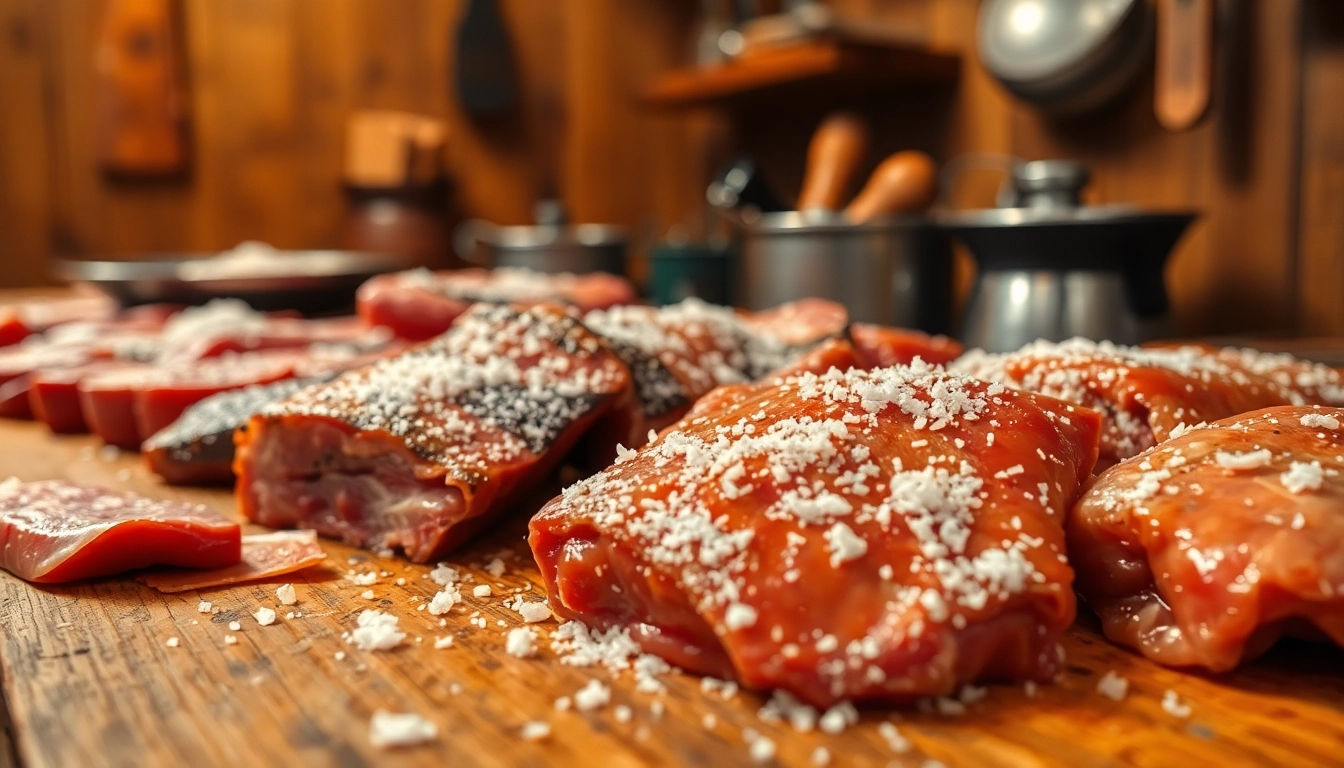The Art and Science of Salting: A Comprehensive Guide to Food Preservation
Salting is an ancient technique used primarily for food preservation, utilizing the natural preservative qualities of salt to inhibit the growth of bacteria and mold. This process involves the application of dry edible salt directly to food, which draws moisture out of the food, thereby preventing spoilage. Salting is closely related to other preservation methods like pickling and brining, both of which also utilize salt in various forms. In the culinary world, salting is not only a preservation method but also plays a crucial role in intensifying flavors, enhancing textures, and creating unique culinary experiences. For those interested in delving deeper, salting is considered an art form by chefs around the globe. The practice of salting dates back thousands of years, playing a critical role in food preservation before the advent of refrigeration. Civilizations such as the Egyptians, Romans, and Chinese utilized salting not only for its preservative qualities but also to make long journeys more bearable by ensuring food could be stored for extended periods without spoiling. In Europe, salted fish became a staple due to its ability to provide protein year-round, especially in areas where fresh fish was not readily available. Moreover, salting played a significant role in trade and economy, as salted products like cod became highly sought after in various regions, influencing global trade routes. Several techniques are employed in the salting process, each with its own unique application and purpose: Salting offers numerous benefits as a preservation method. One of the most significant advantages is its ability to extend the shelf life of perishable foods without the need for refrigeration. Salt disrupts the osmotic balance within microbial cells, ultimately leading to cell death and preventing spoilage. Additionally, salting enhances flavors, making the food more palatable. Some specific benefits include: Not all foods are suitable for salting, but several types lend themselves well to this preservation method: To ensure effective salting, following best practices is essential: While salting, pickling, and brining are often used interchangeably, they represent distinct processes: Understanding when to use each method largely depends on the intended outcome and nature of the food: When engaging in salting, it’s crucial to consider health implications, particularly regarding sodium consumption. Here are several considerations: Himalayan salt blocks have gained popularity due to their aesthetic appeal and unique cooking properties. These pink blocks can be heated or chilled and are used for grilling, serving, or chilling food. To maximize their use: Different meats benefit from specialized salting techniques: Flavored salts are a trendy addition to culinary practices, allowing chefs and home cooks alike to add unique twists to their dishes. Some popular variations include: The future of salting lies in innovation and research into more sustainable practices. As consumers become more aware of health and environmental concerns, methods such as using organic salts and low-sodium options are on the rise. Emerging technologies in food preservation, including pressure and heat treatment methods, are also adapting traditional approaches. Modern technology is transforming traditional salting practices. From precision fermentation processes to the development of advanced sensors that ensure optimal salting conditions, technology is enhancing efficiency and effectiveness. This evolution extends to packaging solutions that maintain salting integrity over extended periods. As the focus on sustainability increases, future practices in salting will emphasize environmentally friendly sourcing of salts and minimizing waste. Initiatives promoting the use of biodegradable packaging and local sourcing for salt production are becoming pivotal in aligning the salting method with eco-friendly initiatives.Understanding Salting: History and Techniques
1. What is Salting?
2. Historical Significance of Salting
3. Common Salting Techniques
Salting for Food Preservation
1. Benefits of Salting in Preservation
2. Types of Foods Ideal for Salting
3. Best Practices for Effective Salting
Comparative Salting Techniques: Pickling vs. Brining
1. Differences Between Salting, Pickling, and Brining
2. When to Use Each Method
3. Health Considerations in Preservation
Advanced Salting Techniques for Culinary Enthusiasts
1. Crafting Himalayan Salt Blocks
2. Salting Techniques for Specific Meats
3. Experimenting with Flavored Salts
Future of Salting: Trends and Innovations
1. Evolving Methods in Food Preservation
2. Impact of Technology on Traditional Salting
3. Sustainable Salting Practices


0 Comment